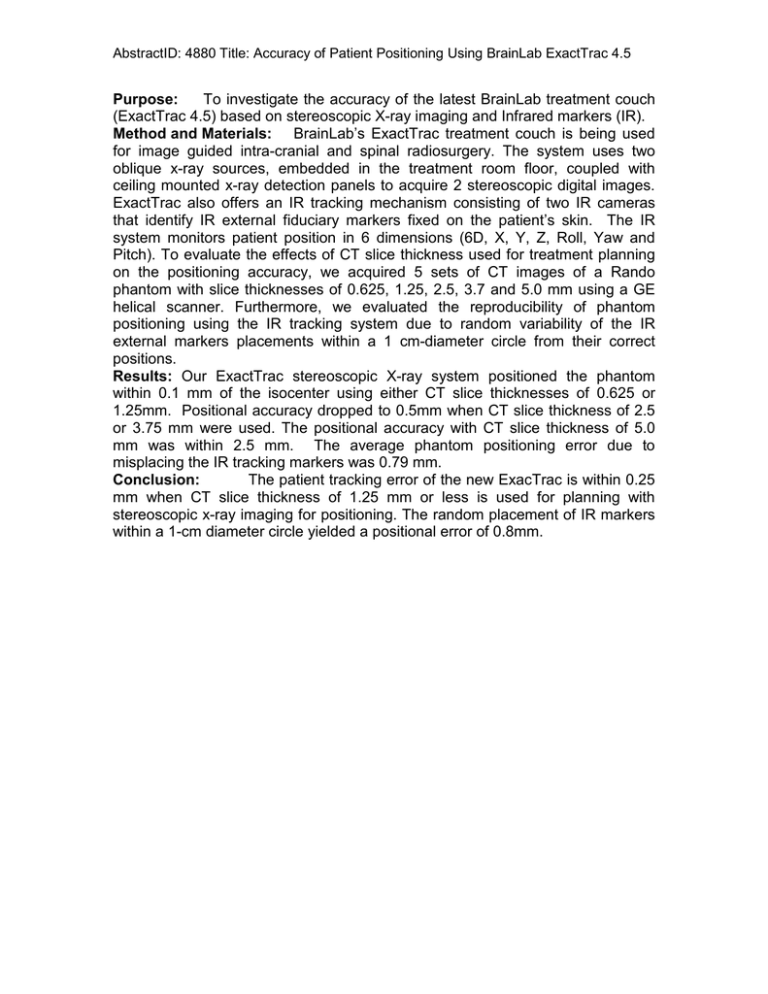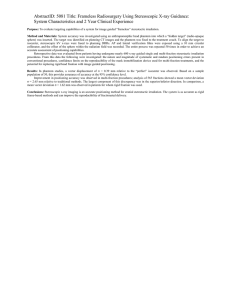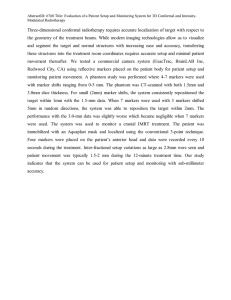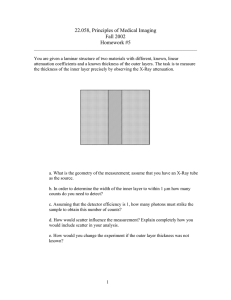Purpose: To investigate the accuracy of the latest BrainLab treatment couch
advertisement

AbstractID: 4880 Title: Accuracy of Patient Positioning Using BrainLab ExactTrac 4.5 Purpose: To investigate the accuracy of the latest BrainLab treatment couch (ExactTrac 4.5) based on stereoscopic X-ray imaging and Infrared markers (IR). Method and Materials: BrainLab’s ExactTrac treatment couch is being used for image guided intra-cranial and spinal radiosurgery. The system uses two oblique x-ray sources, embedded in the treatment room floor, coupled with ceiling mounted x-ray detection panels to acquire 2 stereoscopic digital images. ExactTrac also offers an IR tracking mechanism consisting of two IR cameras that identify IR external fiduciary markers fixed on the patient’s skin. The IR system monitors patient position in 6 dimensions (6D, X, Y, Z, Roll, Yaw and Pitch). To evaluate the effects of CT slice thickness used for treatment planning on the positioning accuracy, we acquired 5 sets of CT images of a Rando phantom with slice thicknesses of 0.625, 1.25, 2.5, 3.7 and 5.0 mm using a GE helical scanner. Furthermore, we evaluated the reproducibility of phantom positioning using the IR tracking system due to random variability of the IR external markers placements within a 1 cm-diameter circle from their correct positions. Results: Our ExactTrac stereoscopic X-ray system positioned the phantom within 0.1 mm of the isocenter using either CT slice thicknesses of 0.625 or 1.25mm. Positional accuracy dropped to 0.5mm when CT slice thickness of 2.5 or 3.75 mm were used. The positional accuracy with CT slice thickness of 5.0 mm was within 2.5 mm. The average phantom positioning error due to misplacing the IR tracking markers was 0.79 mm. Conclusion: The patient tracking error of the new ExacTrac is within 0.25 mm when CT slice thickness of 1.25 mm or less is used for planning with stereoscopic x-ray imaging for positioning. The random placement of IR markers within a 1-cm diameter circle yielded a positional error of 0.8mm.






